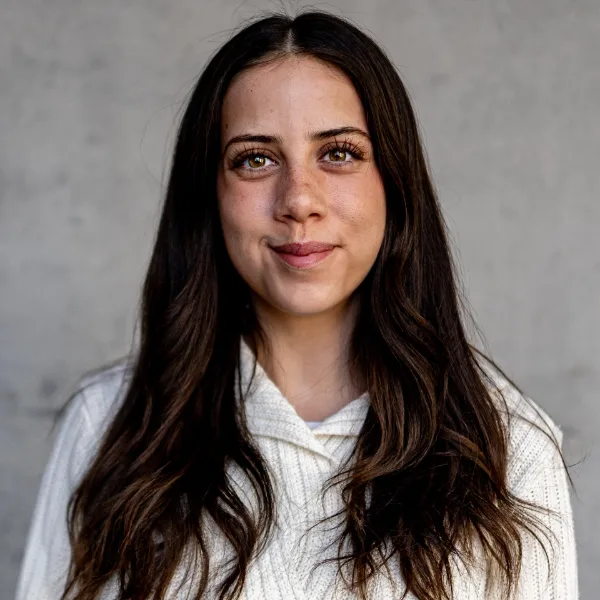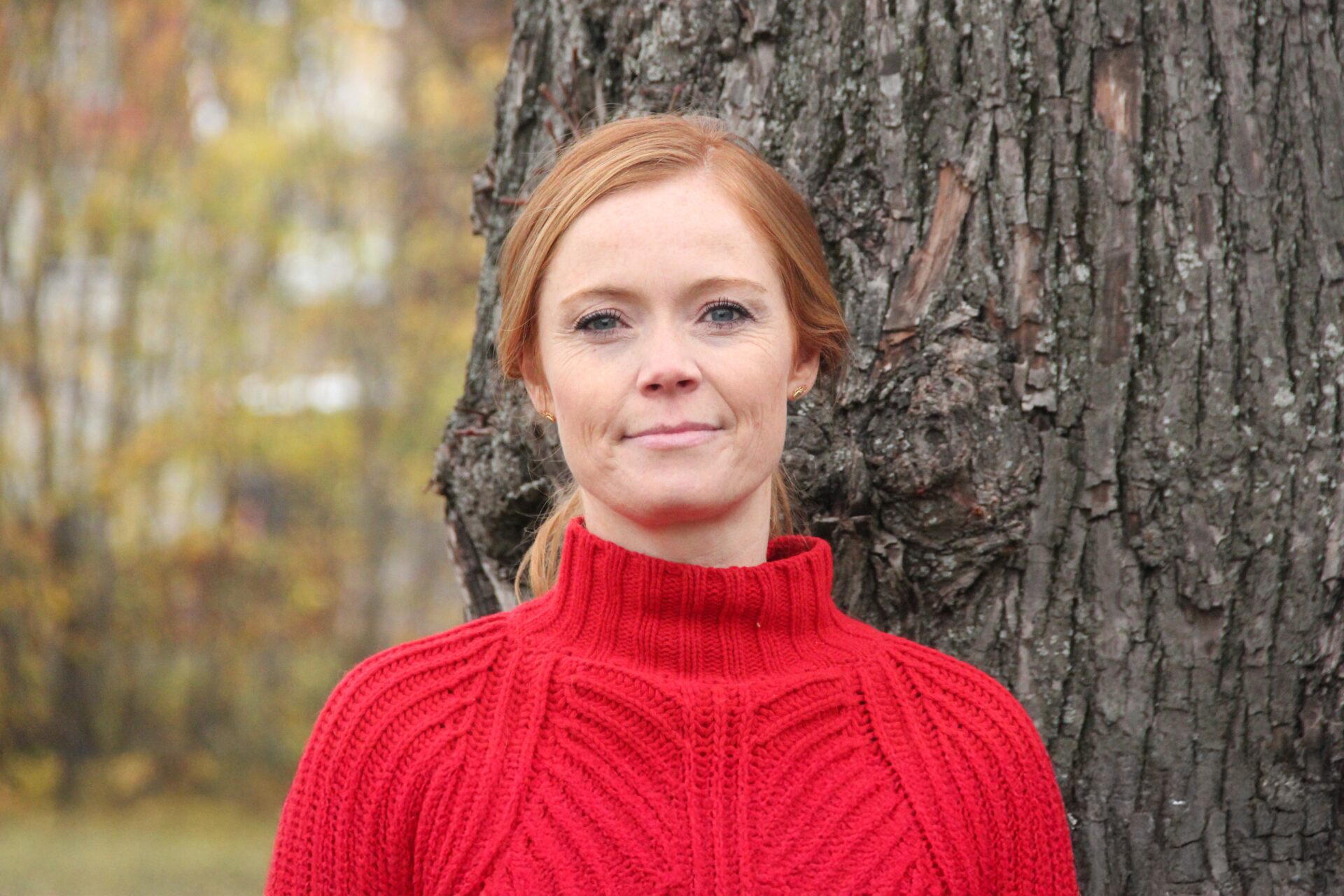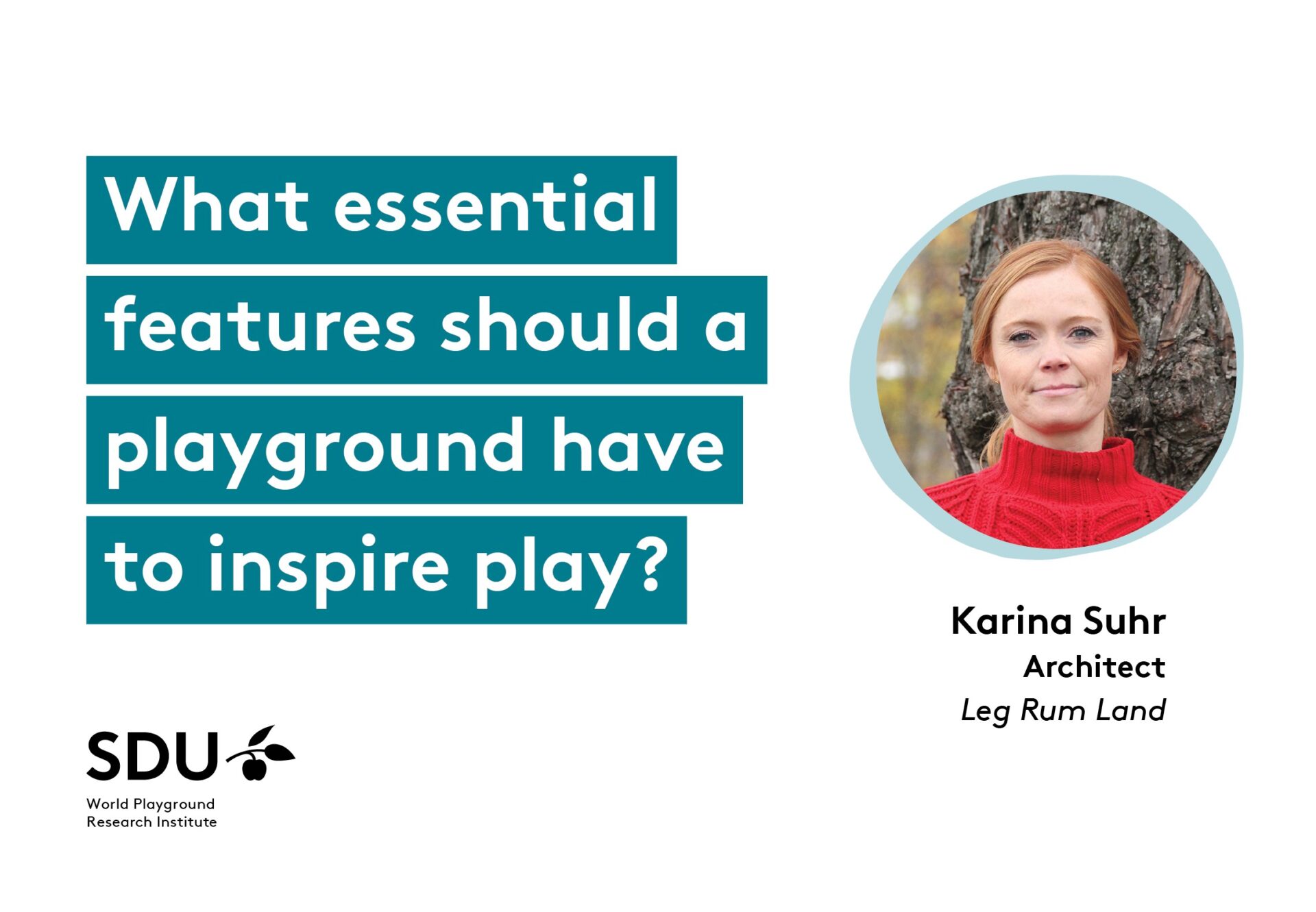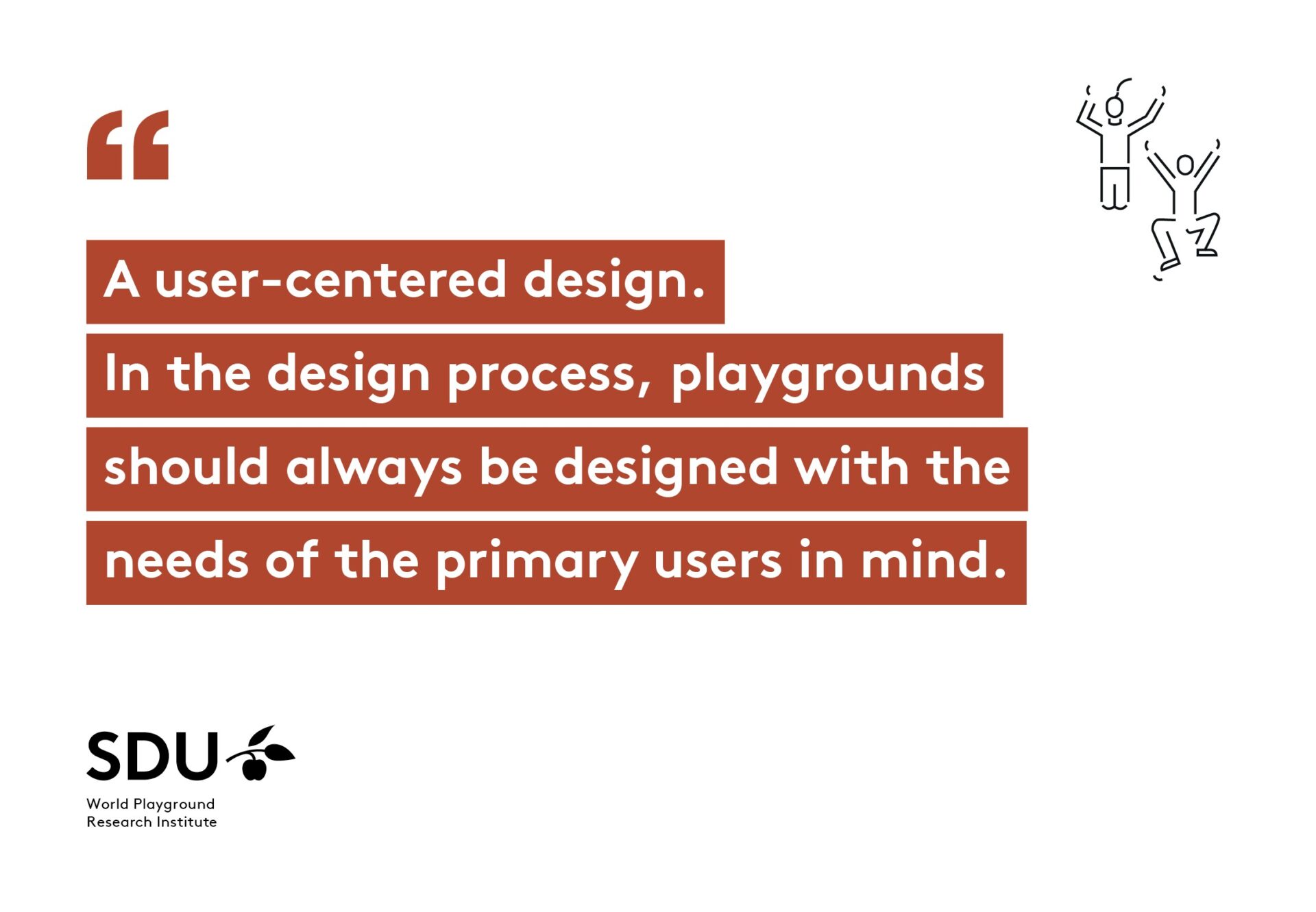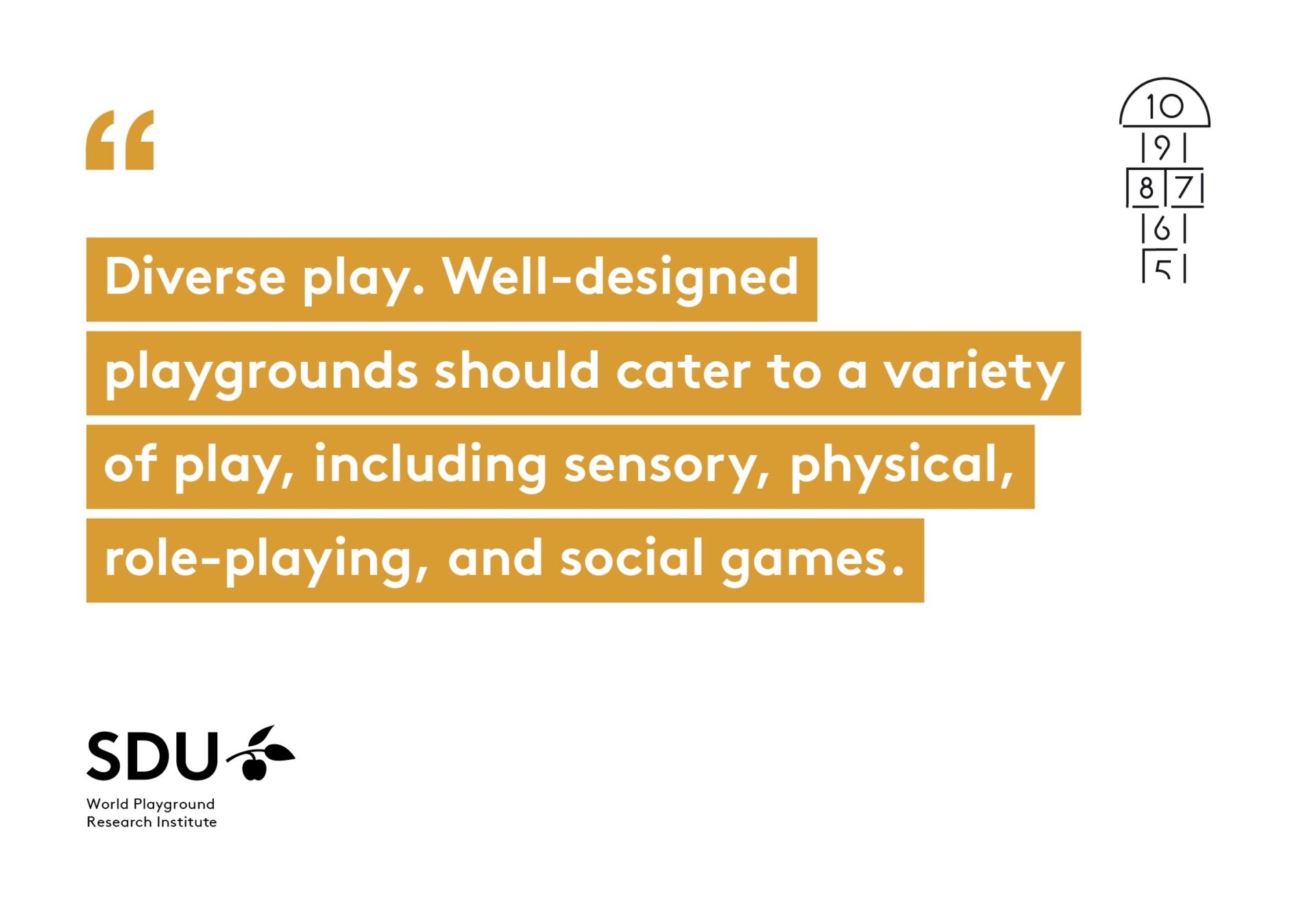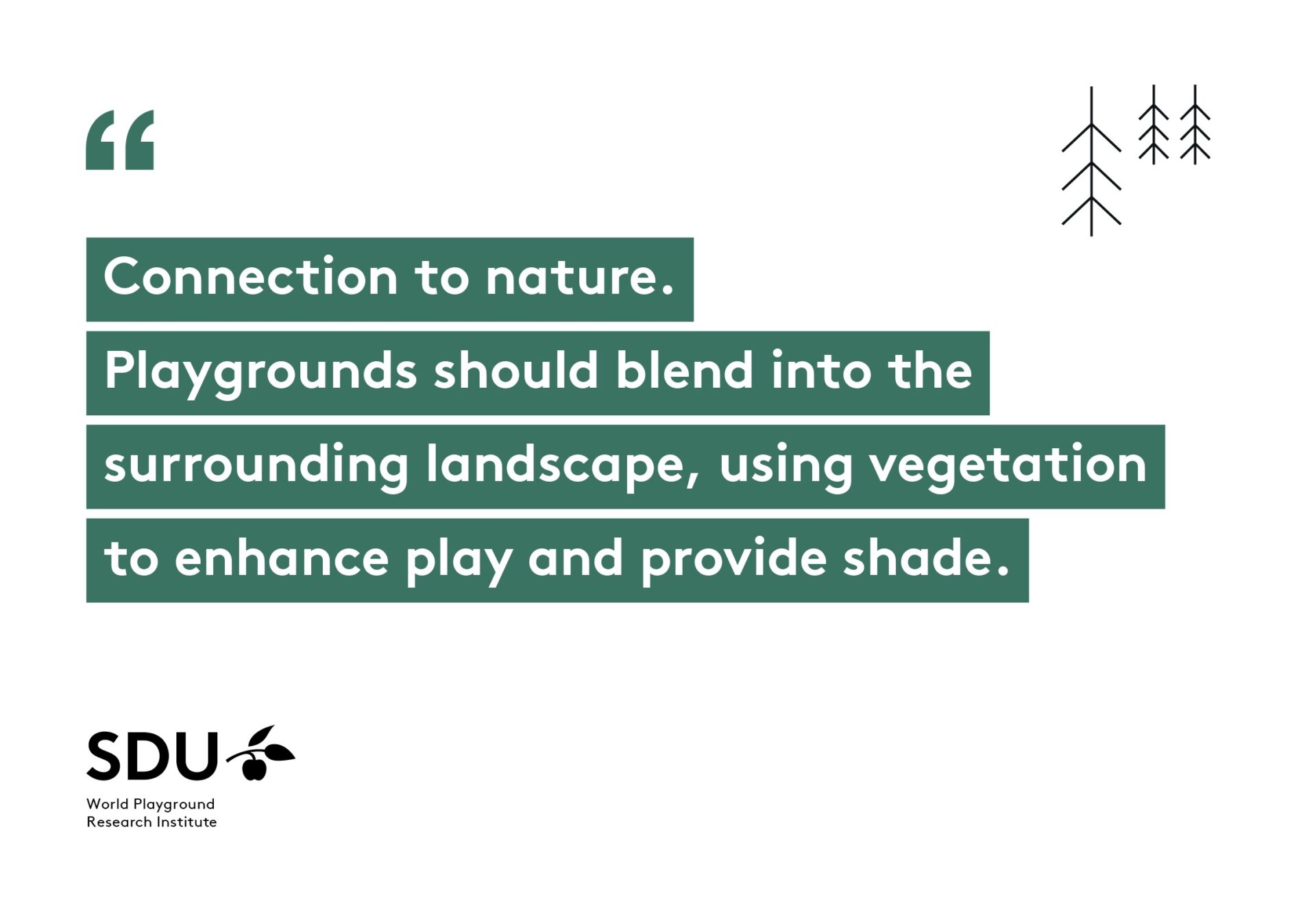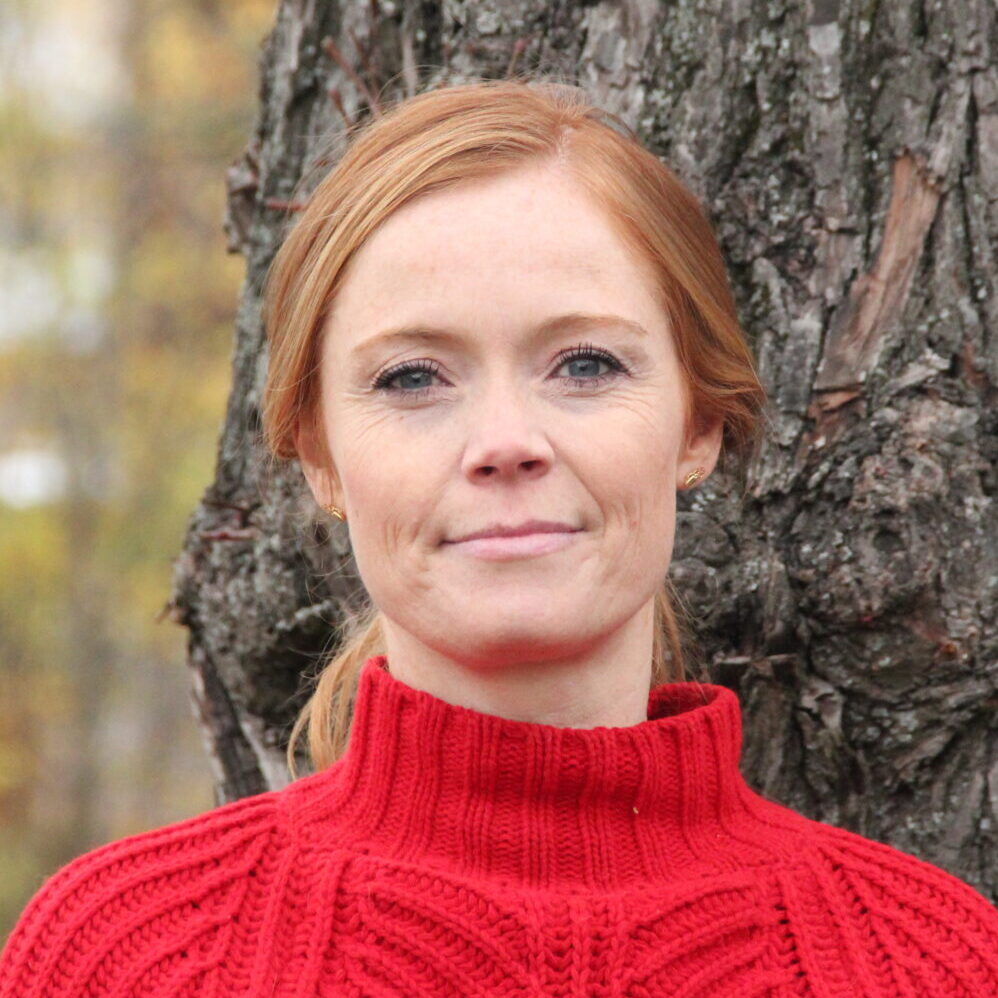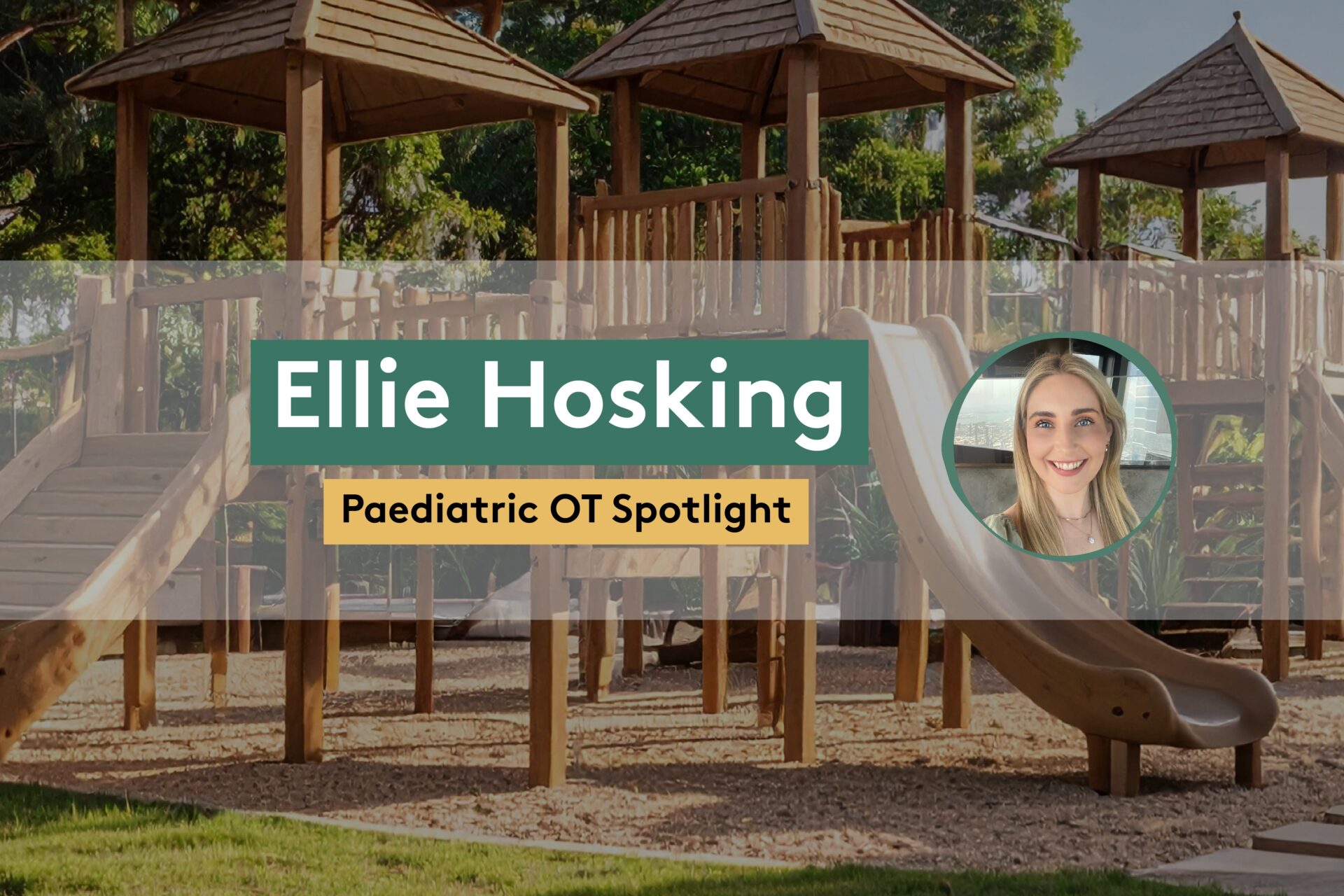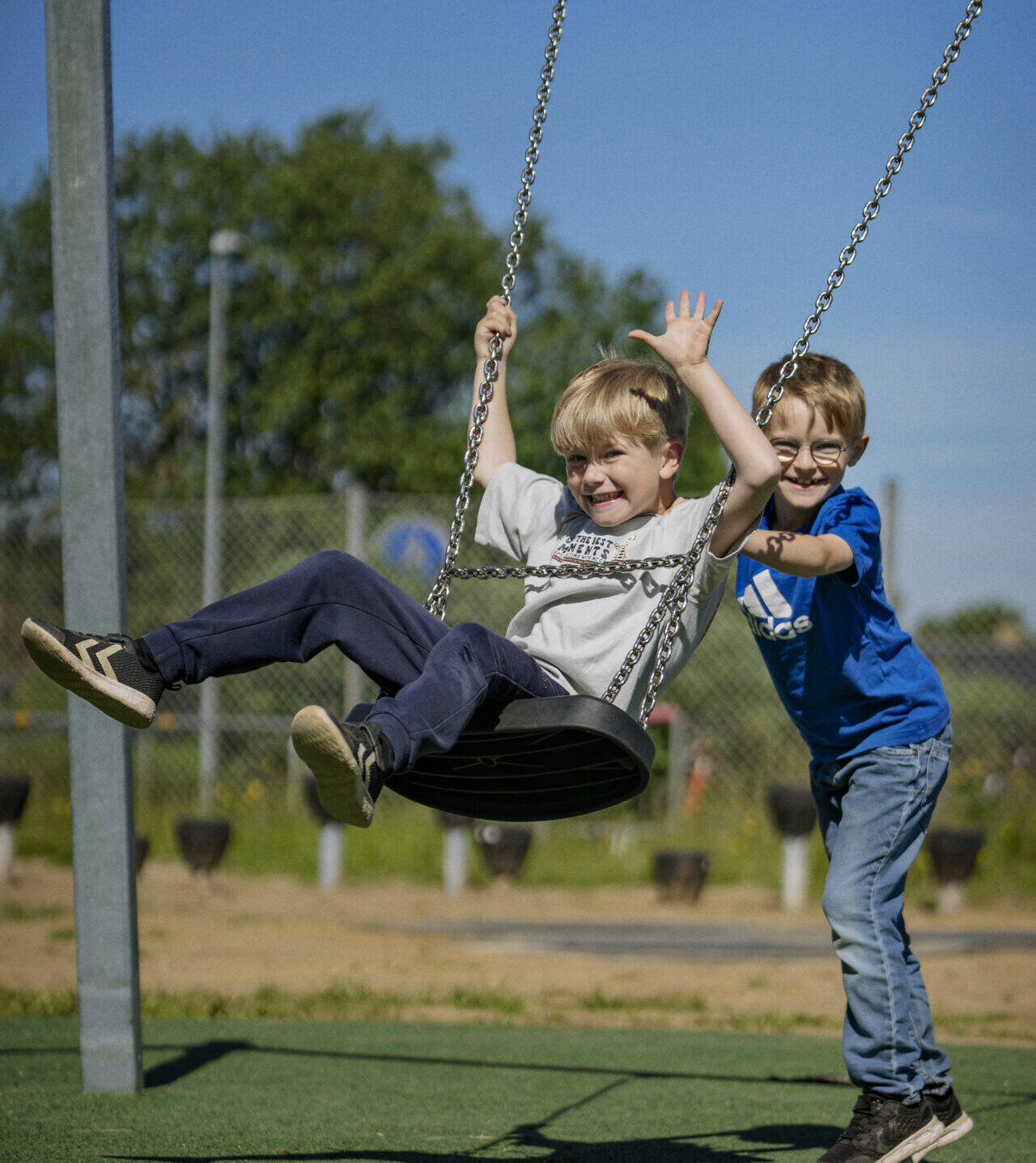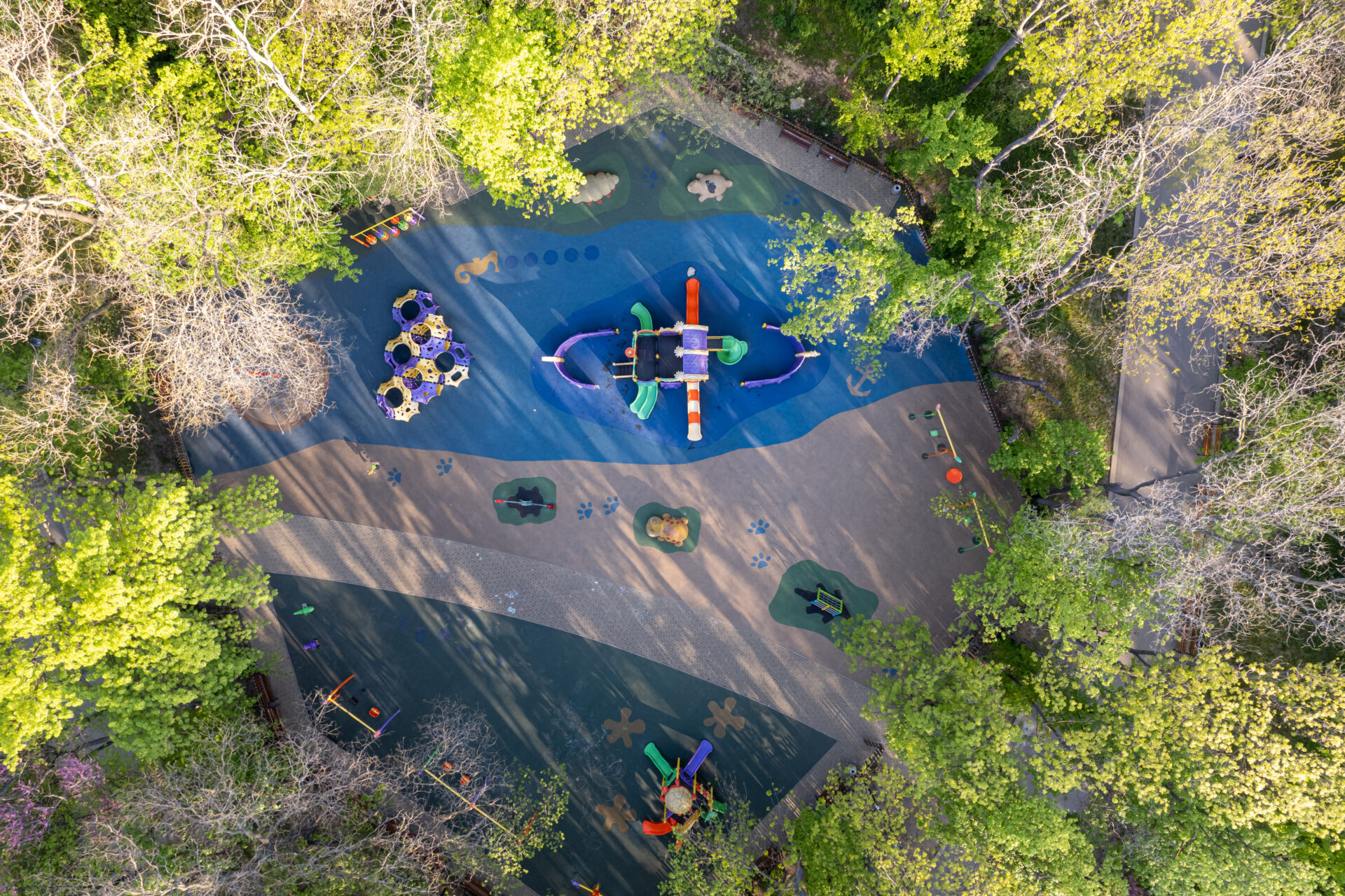SHORT FACTS
Name: Karina Suhr
Current position: Architect
Workplace: Leg Rum Land (English: Play Space Land)
Favorite Outside Play Activity As a Child: ”Growing up, I was fortunate to live on a street with a large group of children of various ages. Some of my best memories are from when we gathered in the street and green areas around the neighborhood to skate on our rollerblades, play hide-and-seek, or dress up.”
Introducing Karina Suhr
Ten years ago, Karina Suhr, who is a graduate of the Royal Danish Academy of Architecture, discovered her true calling as a playground architect.
“Through my work – and my own experiences with my children – I have come to truly appreciate the importance of play. Play creates a sense of security and connection, and when we play together, we share a present, meaningful moment. And this applies to people of all ages.”
In 2022, Karina founded the architectural studio Leg Rum Land (English: Play Space Land), with a focus on what she is most passionate about: designing playful and vibrant outdoor spaces for both children and adults; spaces that embrace, support, and contribute to individual well-being and development.
While many playground companies offer design services, Leg Rum Land provides independent advice tailored to the specific needs of users, along with thorough research on materials, sustainability, and suppliers.
Favorite Playground Project: Copenhagen ZOO
Karina has been involved in many playground projects across the Nordic region, but one that stands out is the biodiversity garden and playground she designed for Copenhagen ZOO in 2024.
“The concept behind the play area was to introduce children aged 1-5 to biodiversity through play. The playground was designed to represent a natural habitat, filled with play elements that reference and mimic native plant species. Here, children can immerse themselves in the world of insects, experiencing what it might be like to be one.”
The goal was to use play, guided learning, and experiences throughout the ZOO to help children develop a personal connection to insects. This, in turn, encourages an understanding of the importance of protecting their habitats and preserving biodiversity.
For Karina, the design process was both unique and successful, thanks to close collaboration with the ZOO’s talented educators and zookeepers. Meetings took place with the sounds of turtles mating in the background or even included a visit to the savanna to handpick stones for the play area.
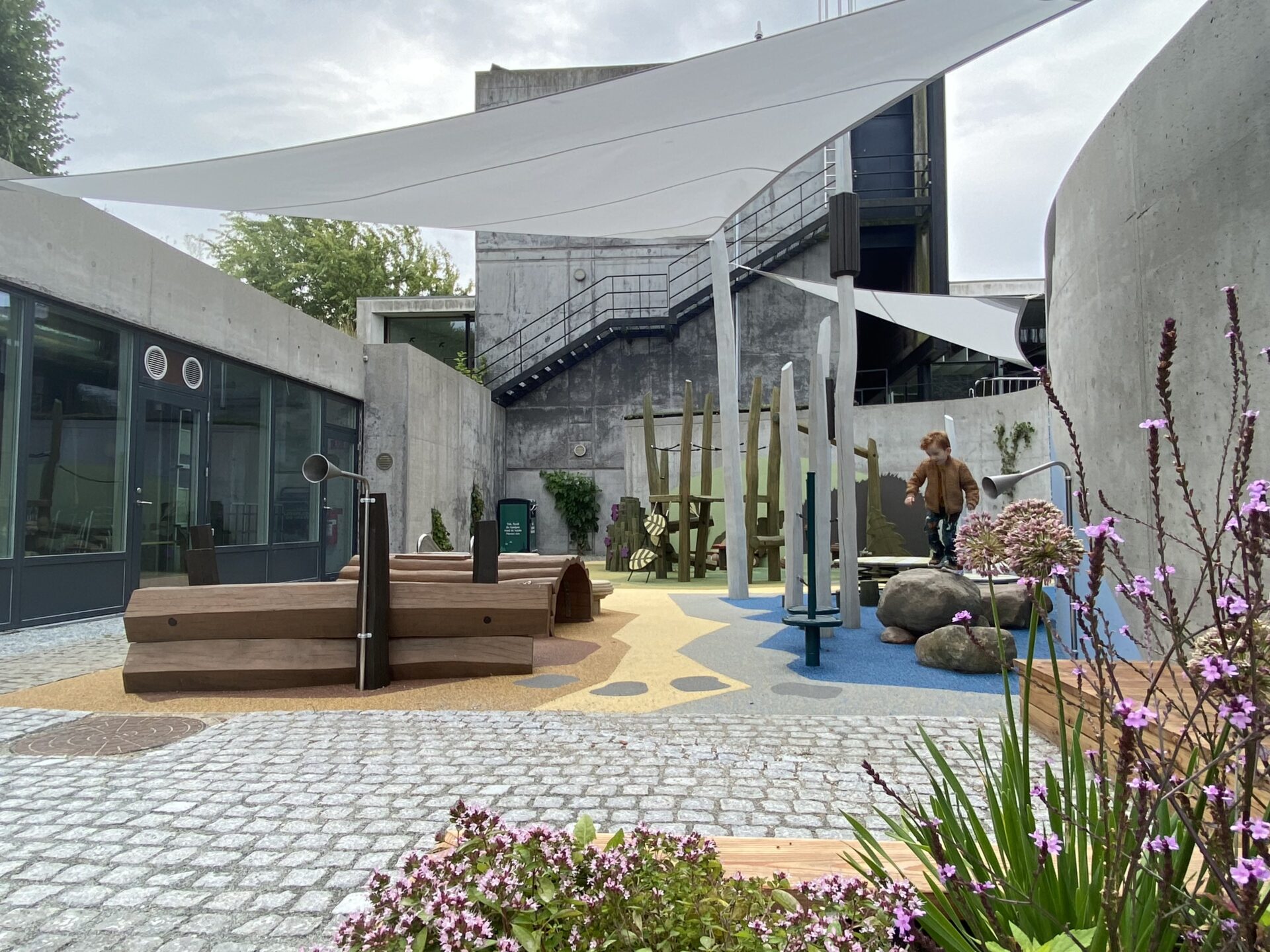
Image: Biodiversity garden and playground area at Copenhagen Zoo – by Karina Suhr
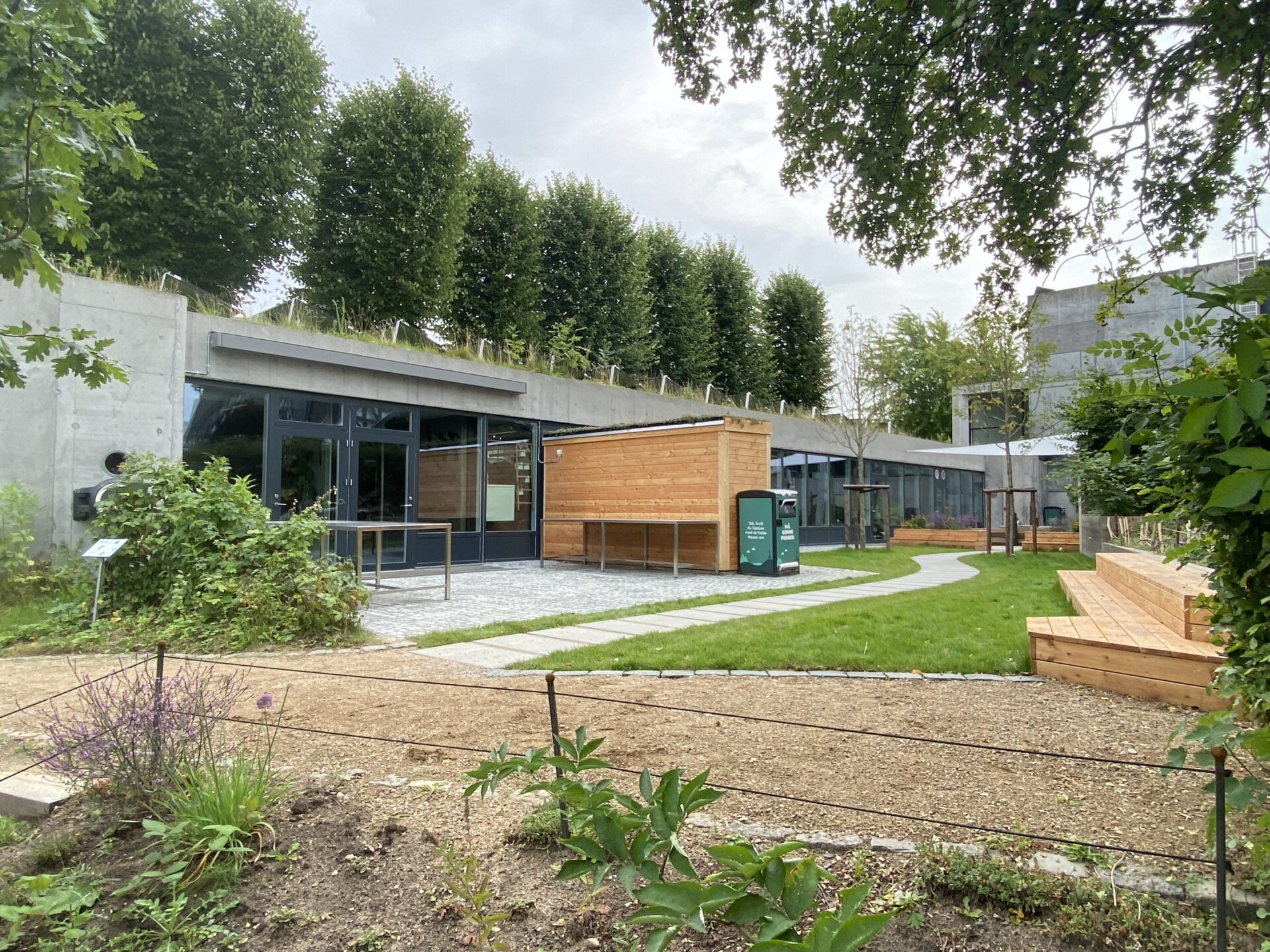
Image: Biodiversity garden and playground area at Copenhagen Zoo – by Karina Suhr
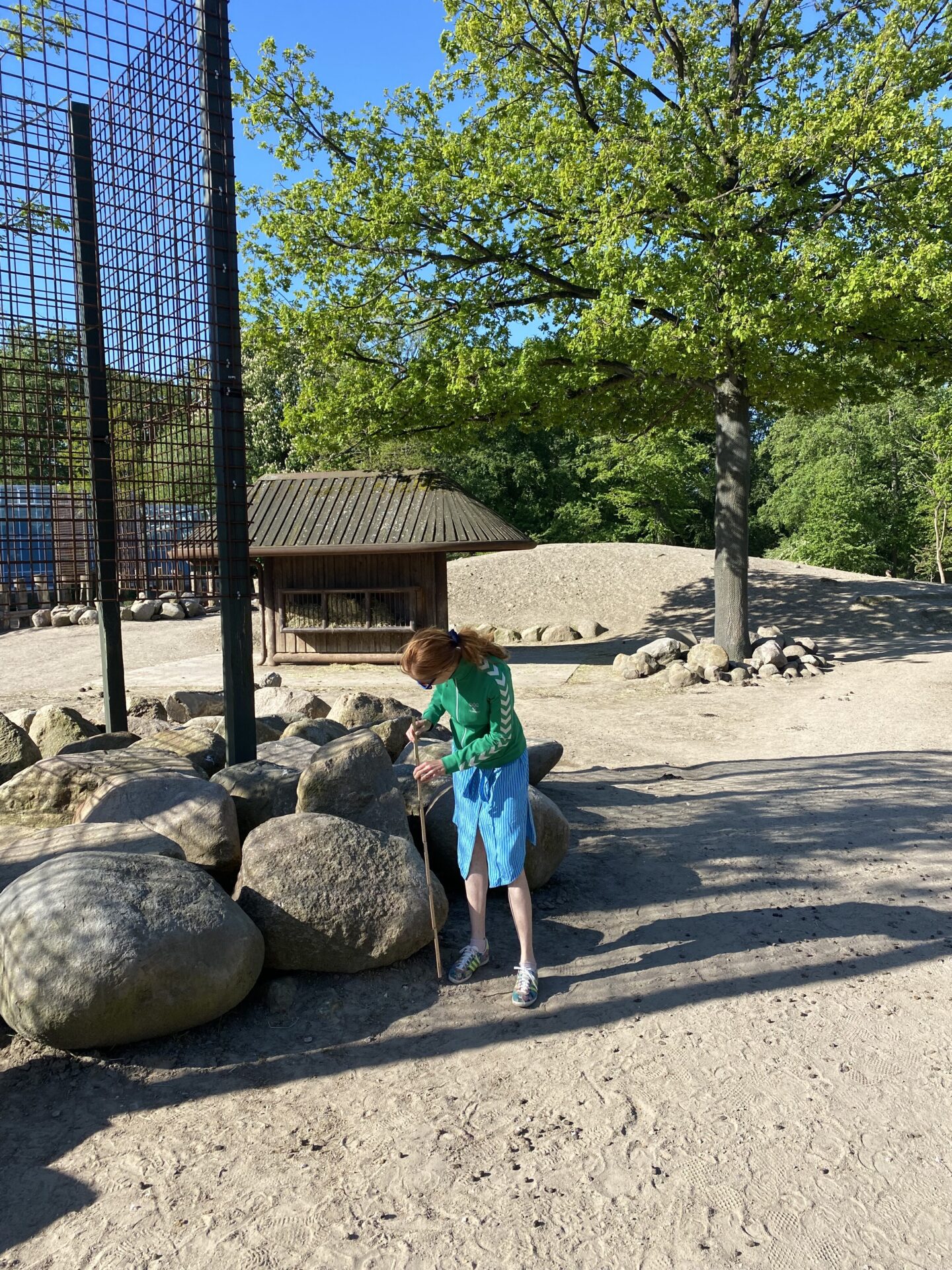
Image: Handpicking stones for the project in Copenhagen Zoo – by Karina Suhr
Trends and Essential Features in Playground Design
For many years, it has been a dominant trend in playground design to use large, figurative, and scenographic play sculptures. However, what surprises Karina most is how slowly the field is evolving.
“Many communities and schools continue to invest in traditional, two- or three-tower climbing structures, which, over time, offer limited play value and do little to support children’s development and creativity.”
According to Karina, a well-designed playground involves many different aspects, features, and considerations. And if you ask her, there are three central things to remember when designing playgrounds: user-centered design, diverse play, and connection to nature.
